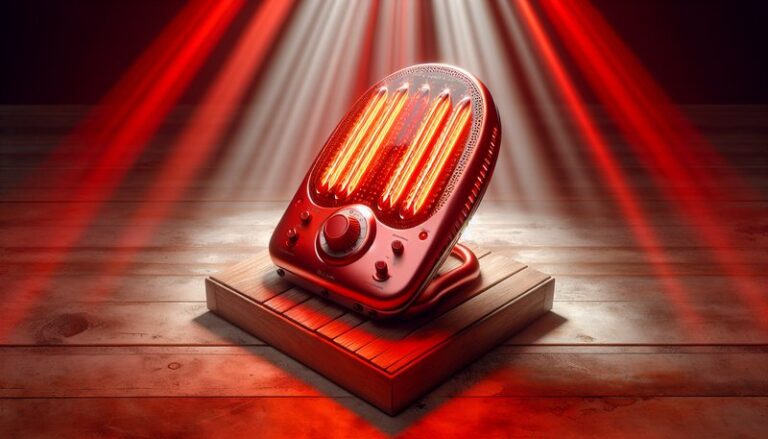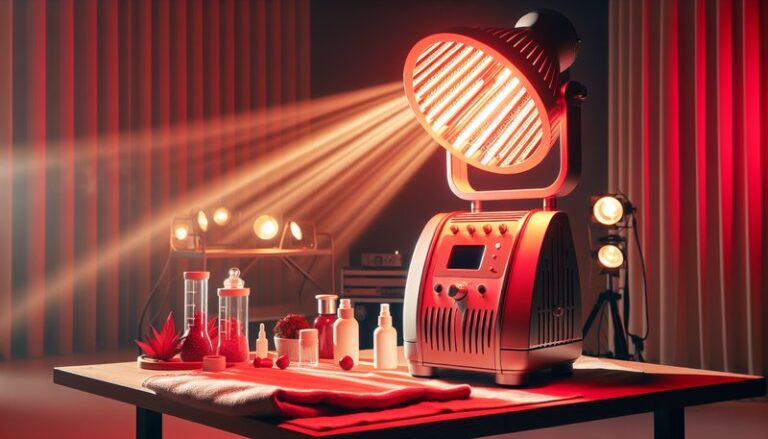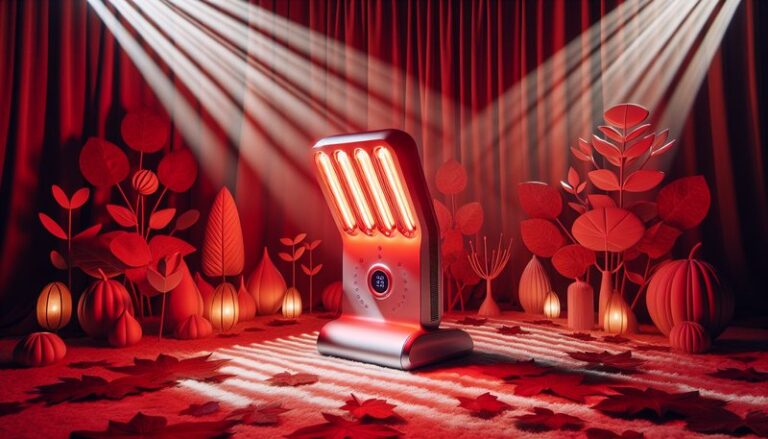Does Red Light Therapy Have To Be On Bare Skin?
Is red light therapy more effective when applied directly to bare skin? This is a question that many users of this innovative treatment modality ask as they explore the best ways to harness its benefits for skin health, pain relief, and overall wellness.
This article will delve into the efficacy of red light therapy, particularly in relation to whether it should be used on bare skin. We will explore its benefits, considerations for use, and alternatives, to provide you with a comprehensive understanding of this therapy and its application.
Key Takeaways
- Red light therapy can penetrate clothing but may be more effective on bare skin for optimized results.
- The benefits of red light therapy, including anti-inflammatory effects and skin rejuvenation, can be maximized when used properly.
- Alternatives to red light therapy are available, but none offer the same combination of benefits.
What is Red Light Therapy?
Red light therapy (RLT) is a treatment that uses low-wavelength red light to promote healing and regeneration at the cellular level. By stimulating mitochondria—the powerhouse of cells—RLT encourages increased energy production which can lead to various health benefits.
Originally utilized in clinical settings for wound healing and tissue repair, red light therapy has gained popularity for its application in aesthetics, pain management, and even hair restoration. This non-invasive therapy is commonly delivered through LED devices or lasers, allowing for versatile use in different contexts.
Mechanism of Action
When administered, red light penetrates the dermis and can even reach deeper tissues. It triggers cellular processes that increase circulation, reduce inflammation, and stimulate collagen production—an essential protein for skin elasticity and youthfulness.
What are the Benefits of Red Light Therapy?
Red light therapy has a range of benefits that enhance both physical health and aesthetic appeal. Here are some of the key advantages.
Enhanced Skin Health
One of the most praised benefits of RLT is its ability to improve skin health. Studies have shown that it helps reduce wrinkles, acne scars, and skin blemishes. The therapy also promotes collagen production, resulting in firmer, more youthful skin.
Pain Reduction and Muscle Recovery
RLT has been found effective in reducing chronic pain and expediting muscle recovery after exercise. Athletes often use the therapy to alleviate soreness and improve performance.
Improved Mood and Energy Levels
Emerging research indicates that red light therapy may help elevate mood and energy levels by influencing the body’s production of serotonin and melatonin. This can be especially beneficial for those experiencing seasonal affective disorder (SAD) or chronic fatigue.
Wound Healing and Tissue Repair
RLT accelerates the healing process for wounds or injuries. The therapy can enhance tissue repair, making it a valuable treatment for various types of injuries, including post-surgical recovery.
Is it Possible to Use Red Light Therapy on Clothing?
While red light therapy can penetrate through lightweight fabrics, using it on bare skin is typically recommended for optimal effectiveness. Clothing can obstruct the light rays, reducing their therapeutic impact on the areas being treated.
What are the Advantages of Using RLT on Bare Skin?
- Maximized Effectiveness: Treatment on bare skin allows for deeper penetration of light, enhancing its benefits.
- Targeted Treatment Areas: Direct application enables users to focus on specific areas of concern, such as wrinkles or pain points.
- Avoiding Fabric Interference: Using RLT without clothing eliminates any potential barriers that could diminish the light’s efficacy.
What are the Disadvantages of Using RLT on Bare Skin?
- Exposure to Light Sensitivity: Those with sensitive skin may experience irritation; in such cases, starting with shorter sessions is advisable.
- Environmental Factors: Using RLT outdoors may expose skin to the sun and increase the risk of sunburn; it’s crucial to consider the environment during treatment.
- Privacy Concerns: Some individuals may feel uncomfortable using RLT if covered or in public settings.
What are the Things to Consider Before Using RLT?
Understanding crucial factors can help users achieve the safest and most productive experience with red light therapy.
Skin Sensitivity
Before starting RLT, it’s vital to assess skin sensitivity. Individuals prone to reactions should consult with a healthcare provider prior to treatment.
Discover the complete story Is Red Light Therapy Real?
Session Length and Frequency
Determine the ideal session length and frequency based on individual goals. Shorter, frequent sessions can yield better results than infrequent, longer treatments.
Explore Does Red Light Therapy Help ED?
Choosing the Right Device
Selecting a quality RLT device is essential. Research reviews and choose a device with the appropriate wavelength and intensity for personal needs.
What are the Alternatives to Red Light Therapy?
For those seeking similar benefits without using red light therapy, there are several alternatives worth considering.
Infrared Therapy
Infrared therapy uses similar principles as RLT but targets deeper tissue layers. It can promote circulation and relieve pain, making it a notable alternative.
Photodynamic Therapy
This clinical treatment uses photosensitizing agents and light activation to treat skin conditions like acne or psoriasis. It offers unique benefits that differ from traditional red light therapy.
LED Skincare Masks
LED masks offer several wavelengths, including red and blue light, targeting specific skin concerns. While less intense than clinical devices, they provide convenience and ease of use at home.
Conclusion: Is it Recommended to Use Red Light Therapy on Bare Skin?
In summary, while red light therapy can be effective on covered areas, using it on bare skin generally enhances its benefits, allowing for deeper light absorption and more targeted treatment. Individuals seeking optimal results from RLT should consider their personal skin conditions, the environment of treatment, and their comfort levels. As always, consulting with a healthcare professional can help tailor a plan that suits individual needs and preferences.
Frequently Asked Questions
Can red light therapy cause skin damage?
No, red light therapy is considered safe and non-invasive. However, overuse or high-intensity devices should be approached with caution to avoid any potential skin irritations.
How soon can users expect to see results?
Results vary but many users report improvements in skin texture or pain reduction within a few weeks. Consistent use according to guidelines can yield the best outcomes.
Is red light therapy suitable for all skin types?
Yes, red light therapy is generally safe for all skin types. Nevertheless, those with existing skin conditions should consult a dermatologist before starting treatment.
Are there any side effects associated with RLT?
Most users experience minimal side effects. The most common is temporary redness or sensitivity in the treated area, which usually subsides quickly.
How does red light therapy compare to topical treatments?
While topical treatments focus on surface effects, red light therapy penetrates deeper layers of skin and tissue, promoting cellular functions and comprehensive healing.





